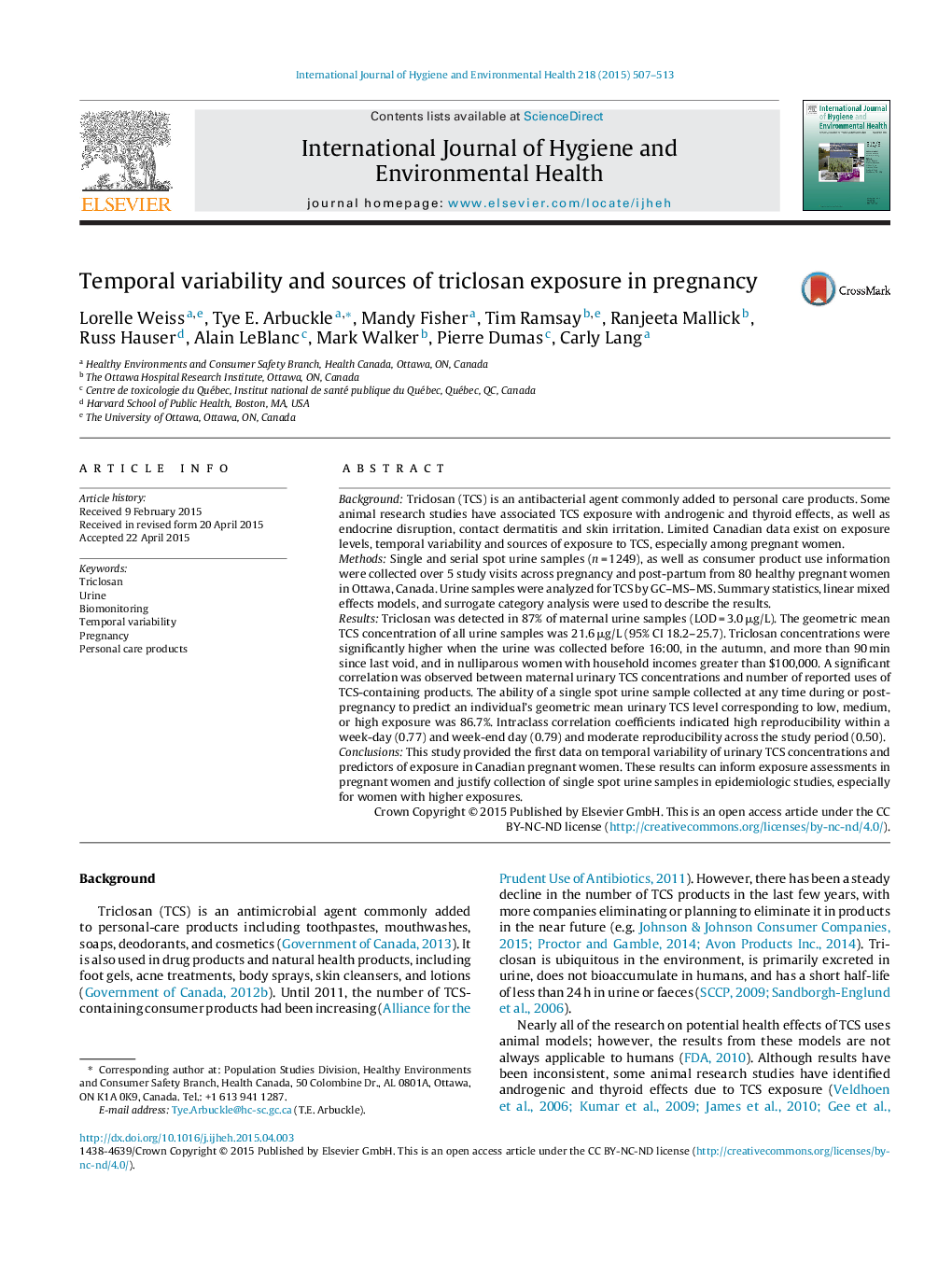| کد مقاله | کد نشریه | سال انتشار | مقاله انگلیسی | نسخه تمام متن |
|---|---|---|---|---|
| 5854556 | 1561888 | 2015 | 7 صفحه PDF | دانلود رایگان |
BackgroundTriclosan (TCS) is an antibacterial agent commonly added to personal care products. Some animal research studies have associated TCS exposure with androgenic and thyroid effects, as well as endocrine disruption, contact dermatitis and skin irritation. Limited Canadian data exist on exposure levels, temporal variability and sources of exposure to TCS, especially among pregnant women.MethodsSingle and serial spot urine samples (n = 1249), as well as consumer product use information were collected over 5 study visits across pregnancy and post-partum from 80 healthy pregnant women in Ottawa, Canada. Urine samples were analyzed for TCS by GC-MS-MS. Summary statistics, linear mixed effects models, and surrogate category analysis were used to describe the results.ResultsTriclosan was detected in 87% of maternal urine samples (LOD = 3.0 μg/L). The geometric mean TCS concentration of all urine samples was 21.6 μg/L (95% CI 18.2-25.7). Triclosan concentrations were significantly higher when the urine was collected before 16:00, in the autumn, and more than 90 min since last void, and in nulliparous women with household incomes greater than $100,000. A significant correlation was observed between maternal urinary TCS concentrations and number of reported uses of TCS-containing products. The ability of a single spot urine sample collected at any time during or post-pregnancy to predict an individual's geometric mean urinary TCS level corresponding to low, medium, or high exposure was 86.7%. Intraclass correlation coefficients indicated high reproducibility within a week-day (0.77) and week-end day (0.79) and moderate reproducibility across the study period (0.50).ConclusionsThis study provided the first data on temporal variability of urinary TCS concentrations and predictors of exposure in Canadian pregnant women. These results can inform exposure assessments in pregnant women and justify collection of single spot urine samples in epidemiologic studies, especially for women with higher exposures.
Journal: International Journal of Hygiene and Environmental Health - Volume 218, Issue 6, August 2015, Pages 507-513
